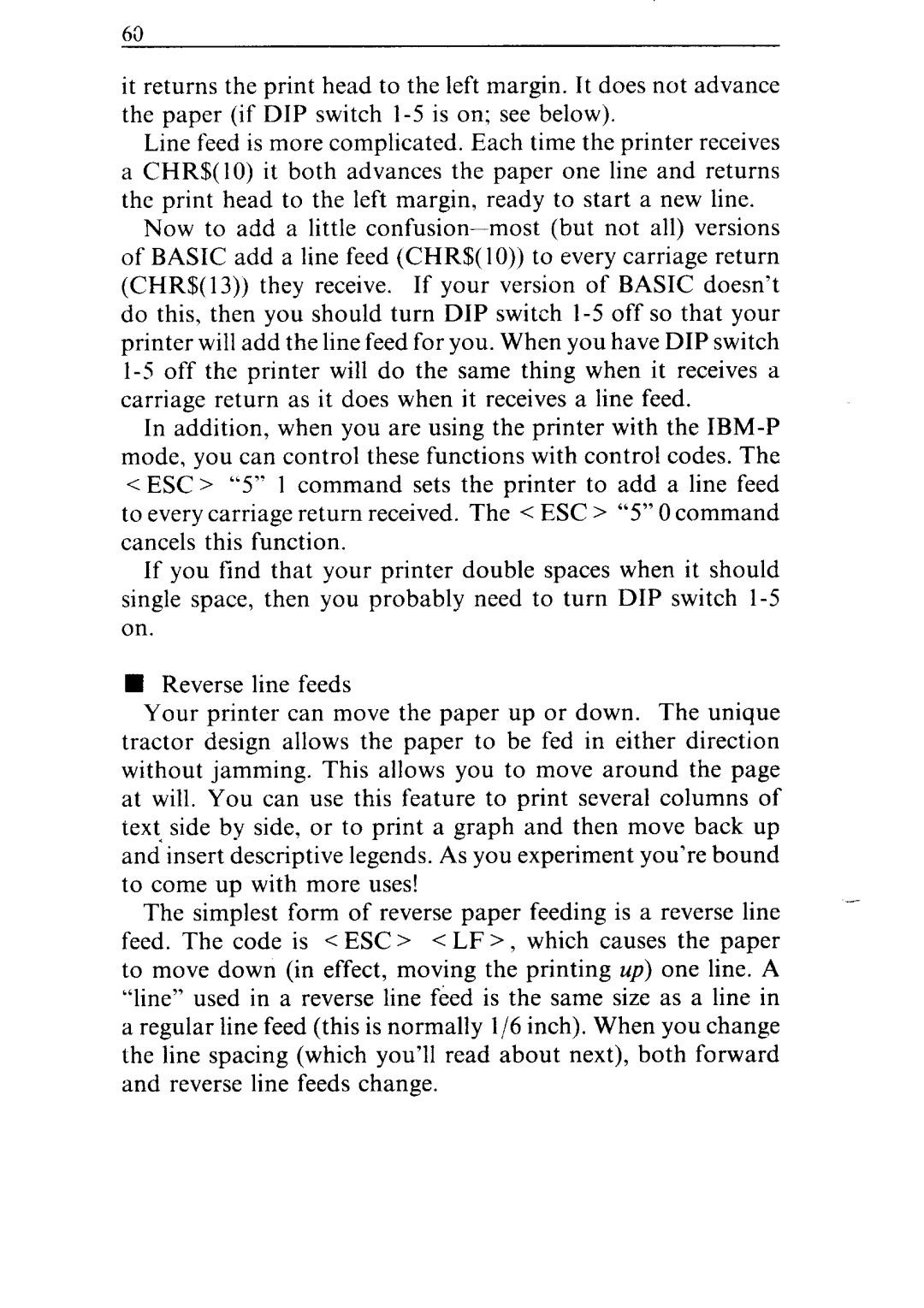
it returns the print head to the left margin. It does not advance the paper (if DIP switch
Line feed is more complicated. Each time the printer receives a CHR$( 10) it both advances the paper one line and returns the print head to the left margin, ready to start a new line.
Now to add a little
In addition, when you are using the printer with the
<ESC > “5” 1 command sets the printer to add a line feed to every carriage return received. The < ESC > “5” 0 command cancels this function.
If you tind that your printer double spaces when it should single space, then you probably need to turn DIP switch
nReverse line feeds
Your printer can move the paper up or down. The unique tractor design allows the paper to be fed in either direction without jamming. This allows you to move around the page at will. You can use this feature to print several columns of text side by side, or to print a graph and then move back up and insert descriptive legends. As you experiment you’re bound to come up with more uses!
The simplest form of reverse paper feeding is a reverse line feed. The code is < ESC > < LF > , which causes the paper to move down (in effect, moving the printing up) one line. A “line” used in a reverse line feed is the same size as a line in a regular line feed (this is normally l/6 inch). When you change the line spacing (which you’ll read about next), both forward and reverse line feeds change.
